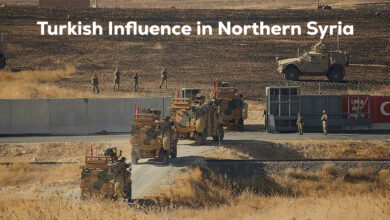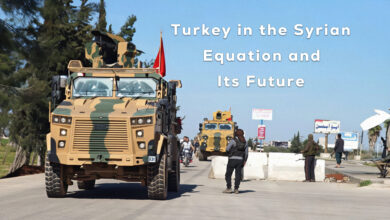Amid escalating Turkish attacks on infrastructure in northeastern Syria, the region has entered a critical stage of political and military tension. This rise in hostilities aligns with Turkey’s interest in reopening peace negotiations with the Kurdistan Workers’ Party (PKK), placing the Autonomous Administration of North and East Syria (AANES) at the center of a high-stakes geopolitical struggle.
The AANES, as a model of decentralized governance, represents an ambitious project in a region where competing powers—Turkey, Syria, the United States, Russia, and Iran—hold strong, often conflicting interests. The future of this administration, fundamental to any political resolution in Syria, remains uncertain amid pressure from Ankara, Damascus, and, at times, ambivalence from its Western allies.
AANES’ resilience has placed it at the core of Syria’s intricate conflict dynamics, especially regarding Kurdish self-determination and ISIS resistance. The U.S. supports the AANES as a strategic partner against ISIS, yet Turkey views it as a threat to its own security and stability. Ankara’s concerns stem from fears that the Kurdish-led AANES might inspire Turkey’s own Kurdish population, fueling aspirations for similar autonomy.
Consequently, Turkey has intensified its attacks on Rojava’s economic infrastructure, combining military pressure with peace talk overtures to PKK leader, Abdullah Ocalan. This dual strategy seeks to both undermine the AANES and negotiate from a position of strength, with Turkish officials insisting that dismantling the AANES is a prerequisite for any regional peace accord. Mazloum Abdi, commander of the Syrian Democratic Forces (SDF), has dismissed this stance, affirming that negotiations on Kurdish issues should involve Damascus directly—not be dictated by Ankara.
While the U.S. has backed the SDF in fighting ISIS, it faces a delicate balancing act between supporting AANES and maintaining ties with Turkey, a NATO ally. This ambiguous approach has frustrated local populations, who feel their Western allies have not done enough to counter Turkish aggression.
Russia, meanwhile, cautiously backs Syrian sovereignty but avoids direct confrontation with U.S.-backed AANES, as Syria and Turkey coordinate strategies to pressure the AANES without destabilizing the region. Syrian forces remain intent on reclaiming national control over the northeast but currently prioritize consolidating gains elsewhere, favoring a “wait-and-see” approach in the region.
Economic sanctions and blockades are exacerbating the region’s hardships. Abdi warns that economic hardships could create conditions for ISIS to regain strength, recruiting jobless youth into its ranks. Turkish strikes on vital resources further complicate efforts to maintain stability in northeastern Syria and protect gains made against ISIS.
- Continued Status Quo: The AANES maintains autonomy through a fragile balance of power, though sustained pressure from Turkey and Damascus could limit this stability.
- Political Compromise with Damascus: A Russian-brokered agreement may allow the AANES limited autonomy within the framework of Syrian state institutions, though this would require mutual concessions.
- Turkish Military Escalation: A U.S. withdrawal could embolden Turkey to conduct larger-scale operations, risking mass displacement and destabilizing the area.
- Expanded Western Support: European nations, wary of ISIS resurgence, may step up support to secure northeastern Syria, contingent on U.S. leadership.
The path ahead for the AANES is fraught with challenges from Turkey, wavering U.S. support, and the Syrian regime’s pressures. Survival may hinge on either achieving a political settlement with Damascus or attracting greater international support to balance Turkish aggression. Without such support, AANES faces potential collapse.
Ankara’s peace talks with the PKK may offer hope, but without addressing Kurdish aspirations in Syria, the region is unlikely to see lasting peace.




